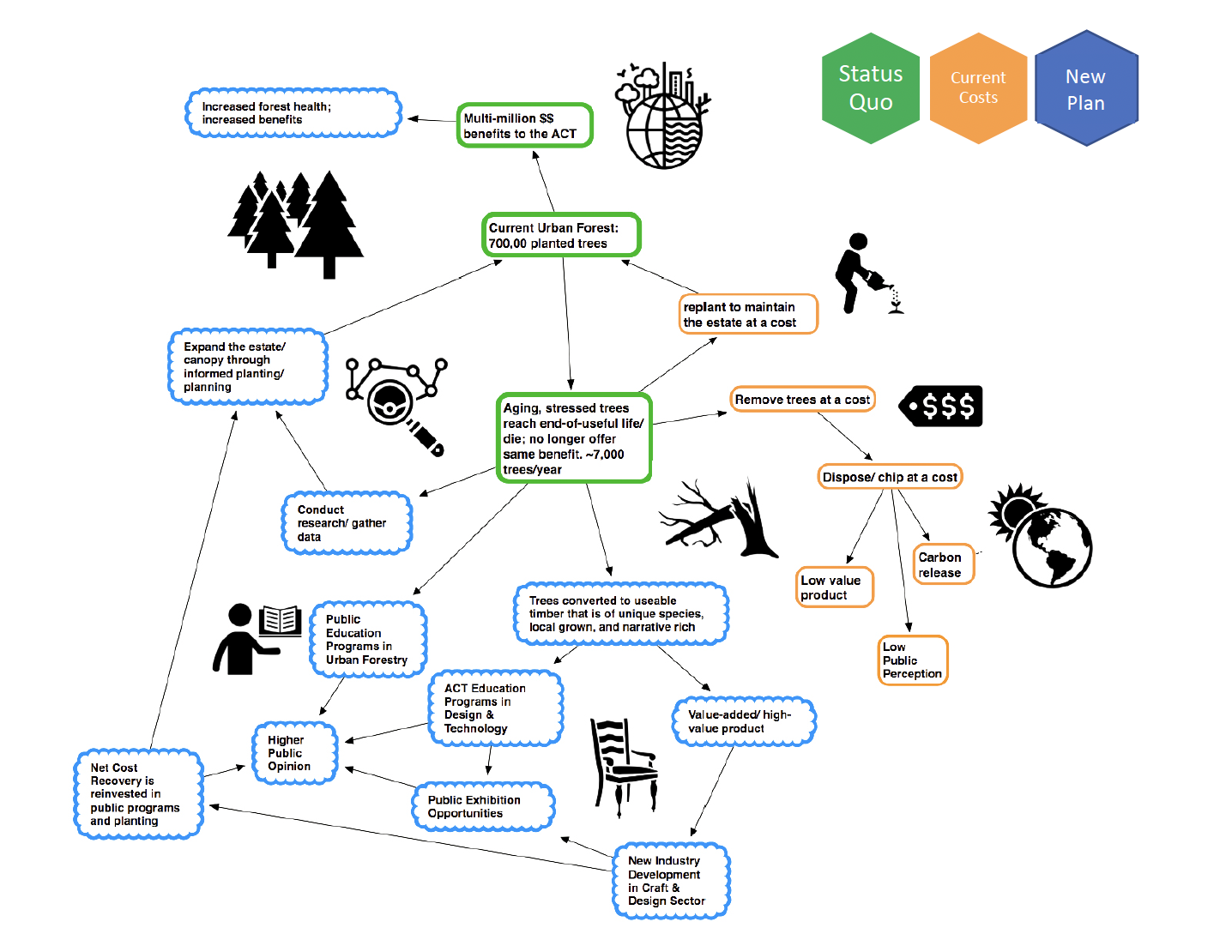Life and Death in a City of Trees: re-imagining how urban timber recovery supports sustainable forests

Image: Ashley Eriksmoen. Visual Mapping of ACT Urban Timber Problem and Proposal (2019).
The Australian Capital Territory (ACT), also known as Australia’s bush capital, is a city of trees boasting an urban forest of over 800,000 trees. Living city trees contribute significant benefits to the health and well-being of urban environments and residents. However, the full tree cycle includes dying, and trees at end-of useful-life typically become costly liabilities for cities.
Across the world, environmentally conscientious cities are learning how to capture the latent value of end-of-life trees for higher value use and better retention of atmospheric carbon than just mulching the wood. Researchers at Australian National University’s School of Art & Design, Fenner School for Environment & Society and National Centre for the Public Awareness of Science have been in dialogue with members of the ACT legislature and ACT Urban Treescapes section since 2018 to reimagine more beneficial outcomes for necessary tree removals. In 2019, ANU research academics Cris Brack (forestry), Ashley Eriksmoen (Art & Design) and Rod Lamberts (public awareness of science) organised a synthesis workshop bringing together a diverse range of experts and stakeholders to identify the potentials, challenges and obstacles involved in establishing an urban timber rescue plan for the territory.
Now, the ACT Circular Economy Strategy and Action Plan 2023-2030 that sets the territory’s agenda for prioritising reuse, recovery and recycling has declared a targeted action item to “develop an urban wood reuse plan for trees removed from public land.” This is described as “the reuse of urban forest material (by-product) at end of life has the potential to transform what is currently a ‘waste stream’ for the Territory into a ‘value stream’. Higher value salvaged wood can be processed into sawn timber for use by local schools, community organisations, and businesses, while low value urban wood is processed into new products such as soil and compost, soft fall mulch, bio-char and wood pellets.” (3.17, p 16)
The inclusion of this action item stems directly from the proposals generated by this project. We are eager to continue with contributing our expertise in developing a plan for implementation.
